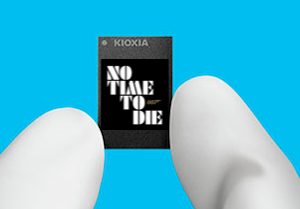Thanks to a wide range of technological and manufacturing innovations, Western Digital (WD) and Kioxia Corporation (formerly Toshiba Memory) have taken their 3D Flash memory to the next generation, grandly confirming Moore’s prescient Law and delivering the goods in a world that relies on reliable and voluminous data storage more than ever.
Masaki Momodomi, the CTO at Kioxia noted: “Through our strong partnership that has spanned two decades, Kioxia and Western Digital have successfully created unrivalled capabilities in manufacturing and R&D.
“Together, we produce over 30% of the world’s flash memory bits (as of Feb 18, 2021) and are steadfast in our mission to provide exceptional capacity, performance and reliability at a compelling cost. We each deliver this value proposition across a range of data-centric applications from personal electronics to data centres as well as emerging applications enabled by 5G networks, artificial intelligence and autonomous systems,” continued Momodomi.
|
|
Beyond vertical scaling – new architecture leverages new innovations
Dr. Siva Sivaram, the President of Technology & Strategy at WD said: “As Moore’s Law reaches its physical limits across the semiconductor industry, there’s one place where Moore’s Law continues its relevancy — that’s in flash.
“To continue these advances and meet the world’s growing data demands, a new approach to 3D flash memory scaling is critical. With this new generation, Kioxia and Western Digital are introducing innovations in vertical as well as lateral scaling to achieve greater capacity in a smaller die with fewer layers. This innovation ultimately delivers the performance, reliability and cost that customers need.”
So, what makes 6th-gen 3D flash memory so advanced and better than before?
We’re told this sixth-generation 3D flash memory features “advanced architecture beyond conventional eight-stagger memory hole array and achieves up to 10% greater lateral cell array density compared to the fifth-generation technology. This lateral scaling advancement, in combination with 162 layers of stacked vertical memory, enables a 40% reduction in die size compared to the 112-layer stacking technology, optimising cost."
James Bond’s next movie is called “No Time To Die”, but clearly, when it comes to flash memory, there’s plenty of time to die, you just want to do that on an ever smaller scale, which conversely enables ever bigger things.

(Note: there is no connection between The Flash and James Bond either, unless there is some weird crossover between DC Comics and James Bond coming sometime this decade)
Kioxia and WD’s teams “also applied Circuit Under Array CMOS placement and four-plane operation, which together deliver nearly 2.4 times improvement in program performance and 10 per cent improvement in read latency compared to the previous generation. I/O performance also improves by 66 per cent, enabling the next-generation interface to support the ever-increasing need for faster transfer rates.”
Overall, we’re told “the new 3D flash memory technology reduces the cost per bit, as well as increases the manufactured bits per wafer by 70%, compared with the previous generation. Kioxia and Western Digital continue to drive innovation to ensure continued scaling to meet the needs of customers and their diverse applications.
The companies detailed the related innovations in a joint presentation at the ISSCC 2021 show last week.
Oh, and to both companies - thanks for the memories!
Here's a YouTube video about Kioxia:
Here's a video from Kioxia about advanced flash memory for the 5G data revolution:
Here's an video from WD in 2019 about its older 96-layer Flash Memory (as there are no videos about this new 6th-gen version yet):








































